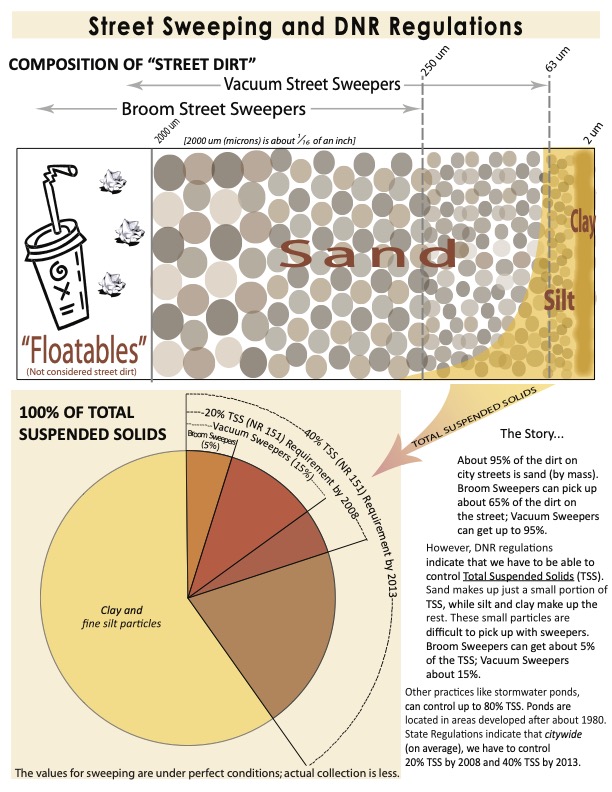Water Quality
What is urban stormwater quality? That question has a lot of different answers, depending on perspective. From a regulatory perspective, the City of Madison falls under two regulatory mandates for treatment of runoff/stormwater:
- WPDES/NPDES permits: The City is a Phase 1 permit holder from the WDNR and EPA under the Clean Water Act. Specifically, we have both a Wisconsin Pollutant Discharge Elimination System and National Pollutant Discharge Elimination System. These permits are enforced in Wisconsin under State Administrative Code NR-216 and NR-151, and set mandatory reductions in discharge of Total Suspended Solids (TSS) to the Waters of the State compared to no controls.
- Rock River Total Maximum Daily Load (TMDL) sets a maximum amount of TSS and Total Phosphorous (TP) that the City may discharge to the Waters of the State. The City has modeled the pollutant removal in the TMDL areas and created a detailed report.

Applying the technical information in real terms, the regulations say we have to control a certain percentage of pollutants, but it is a very specific definition of pollution – take a look at the diagram below:
What that diagram shows is the “regulatory dirt – far right hand side yellow highlight” is a very small part of what most normal people would call pollution. In Madison, we try to address the real pollution that people see while addressing the “regulatory” pollutants to stay in compliance with our permits.
Source of pollution 
Unfortunately, the source of pollution is us: vehicles break off pieces of themselves as they move along, tires wear down (and the particles get washed into the storm sewer), brake pads degrade, paint chips off, galvanizing chips off, the shingles on your roof wear, paint chips off your home, grass clippings blow into the street, fertilizer gets placed on sidewalk. Everything that we do essentially breaks down over time and is washed into our stormwater sewer system and contributes in one way or another to pollution of the Waters of the State.
Action
The best way to address pollution is to not cause it to begin with. The City participates in several Pollution Prevention Programs including: oil collection sites, Clean Sweep participation, YAHARA WINS participation, and have an illicit discharge detection and elimination plan (IDDE) in place.
Most of the common types of pollution listed above move through types of treatment in place that include:
Catch basins
Street sweeping
Retention and Detention ponds
Bioretention basins
All of these practices reduce pollution to the Waters of the State by trapping it (which then requires maintenance to keep them functioning).
